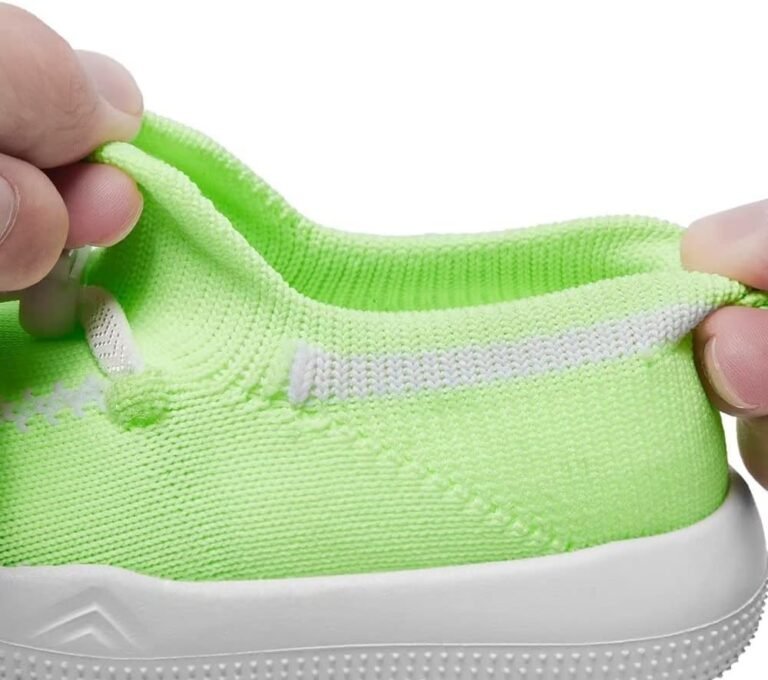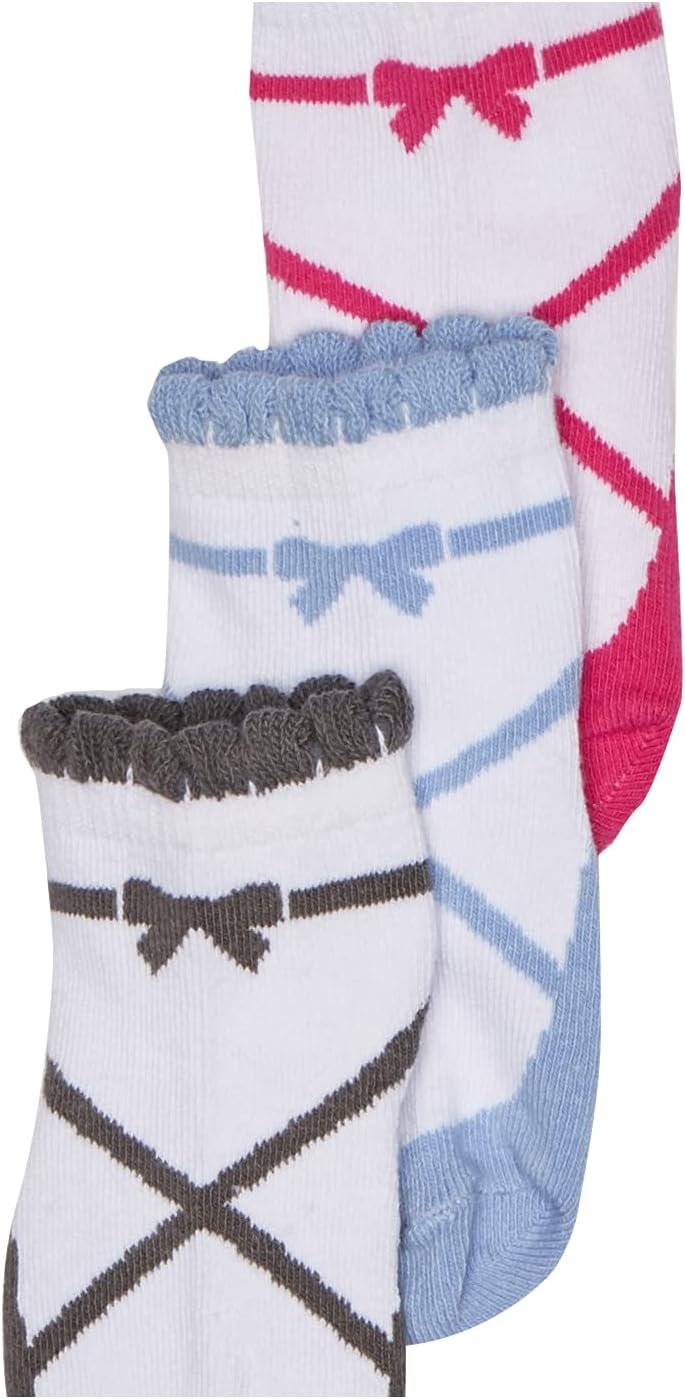Baby Shoes 12-18 Months
In the exciting journey of parenthood, ensuring the proper development of your little one’s feet is paramount. As your baby begins to explore the world around them, finding the right shoes becomes crucial.
From understanding foot development to selecting the perfect fit, this article aims to provide knowledgeable and informative insights on baby shoes designed for 12-18 months.
Discover the best materials, supportive features, easy-to-use closures, and budget-friendly options that will keep your active toddler comfortable and their growing feet healthy.
Key Takeaways
- Soft and pliable bones make babies more susceptible to foot issues.
- Accurate shoe sizing is crucial for healthy foot development.
- Baby shoes should be made from soft, breathable, and flexible materials.
- Sneakers with adjustable straps or laces are popular and provide comfort and support for active toddlers.
Understanding Baby Foot Development
Understanding baby foot development is crucial for selecting appropriate shoes for children aged 12-18 months. Baby foot care is essential during this stage as it sets the foundation for healthy foot development in the future. Babies’ feet are still growing and forming, and their bones are soft and pliable. This makes them more susceptible to various common foot issues.
One common foot issue in babies is flat feet, where the arches of the feet do not develop fully. This is normal in young children as their arches typically develop between the ages of 3 and 5. However, if the flat feet persist and cause pain or affect the child’s ability to walk, it is advisable to seek professional medical advice.
Another common foot issue is toe-walking, where a child consistently walks on their tiptoes instead of using a normal heel-to-toe gait. While toe-walking can be a normal part of early development, it can also be a sign of an underlying condition. Consulting a healthcare professional is recommended for proper evaluation and intervention if necessary.
Understanding these common foot issues and their potential causes is essential for selecting appropriate shoes that support healthy foot development. It is important to choose shoes that provide adequate arch support, cushioning, and flexibility to promote proper foot alignment and movement. Additionally, regularly monitoring the child’s foot growth and consulting with healthcare professionals can help address any potential foot issues early on.
Importance of Proper Shoe Sizing
Accurate shoe sizing is crucial in ensuring proper foot development and preventing common foot issues in children aged 12-18 months. During this critical stage of early development, it is important to choose shoes that provide a proper fit to support the natural growth and movement of the baby’s feet.
Measuring a baby’s feet is the first step in determining the proper shoe size. It is recommended to measure both feet, as they may differ in size. To measure the baby’s feet, place them on a piece of paper and trace an outline. Then, measure the length from the heel to the longest toe. This measurement can be compared to a shoe sizing chart to determine the appropriate shoe size.
Proper shoe fit is essential for the healthy development of a baby’s feet. Shoes that are too tight can restrict movement and cause discomfort, while shoes that are too loose can lead to instability and potential injuries. It is important to choose shoes that have enough room for the baby’s toes to move freely and allow for natural foot growth.
By ensuring a proper shoe fit, parents can help prevent common foot issues such as blisters, calluses, and ingrown toenails. Additionally, proper shoe sizing promotes proper foot alignment and can reduce the risk of more serious issues such as foot deformities or gait abnormalities.
Types of Materials for Baby Shoes
When considering types of materials for baby shoes, it is important to prioritize both comfort and durability in order to provide optimal support for their growing feet. Baby shoes should be made from materials that are soft, breathable, and flexible to allow for natural movement and development. Additionally, the materials should be sturdy enough to withstand the wear and tear of active toddlers.
Here are some popular shoe brands that offer eco-friendly options for baby shoes:
-
Nike: Nike has a range of baby shoes made from sustainable materials such as recycled polyester and organic cotton. These shoes are designed to provide maximum comfort and support while also being environmentally friendly.
-
Toms: Toms is known for its commitment to social and environmental responsibility. They offer baby shoes made from organic and vegan materials, ensuring that your little one’s feet are both comfortable and eco-friendly.
-
Adidas: Adidas has a line of eco-friendly baby shoes that are made from recycled materials, such as plastic bottles and old sneakers. These shoes not only reduce waste but also provide the necessary support for growing feet.
-
Stride Rite: Stride Rite offers a range of baby shoes made from natural and sustainable materials, such as leather sourced from eco-friendly tanneries. These shoes are designed to be durable and comfortable, perfect for little ones on the move.
When choosing baby shoes, it is important to consider the materials used to ensure both comfort and sustainability. By opting for eco-friendly options from popular shoe brands, you can provide the best for your child’s growing feet while also contributing to a healthier planet.
Best Styles for Active Toddlers
One popular choice for active toddlers is the sneaker style, as it provides both comfort and support for their constant movement. Comfortable designs and durable construction are key factors to consider when choosing shoes for toddlers between the ages of 12 to 18 months.
Toddlers at this age are constantly exploring their surroundings and engaging in physical activities. They need shoes that can withstand their energetic movements and offer a secure fit. Sneakers are designed with these considerations in mind, featuring cushioned insoles and flexible outsoles that provide comfort and support for growing feet.
Comfortable designs are crucial for active toddlers, as they spend a significant amount of time on their feet. Look for shoes with breathable materials that allow air circulation and prevent excessive sweating and discomfort. Additionally, choose shoes with adjustable straps or laces to ensure a proper fit and prevent any rubbing or irritation.
Durable construction is also essential for toddlers who are constantly on the move. Look for shoes made from high-quality materials, such as leather or synthetic fabrics, that can withstand the wear and tear of daily activities. Reinforced toe caps and sturdy outsoles are also important features to consider, as they provide additional protection and durability.
Supportive Features for Growing Feet
What supportive features should be considered for growing feet, and how do they contribute to the development and comfort of toddlers between the ages of 12 to 18 months?
When it comes to choosing shoes for toddlers between the ages of 12 to 18 months, it is essential to consider supportive features that promote proper foot development and ensure comfort. Here are some key features to look for:
-
Flexible Soles: Shoes with flexible soles allow for natural foot movement and development. They enable toddlers to balance and walk more easily, promoting healthy foot development.
-
Soft and Breathable Materials: Shoes made from soft and breathable materials, such as leather or mesh, allow for proper ventilation and help prevent excessive sweating and discomfort. They also reduce the risk of skin irritation and blisters.
-
Roomy Toe Box: A roomy toe box provides ample space for the toes to move and wiggle freely. This feature is crucial for proper toe development and prevents the formation of bunions or other foot deformities.
-
Secure Closures: Shoes with secure closures, such as Velcro straps or buckles, ensure a snug fit and prevent the shoes from slipping off during active play. This feature also promotes stability and reduces the risk of trips and falls.
By considering these supportive features, parents can choose shoes that not only keep their toddlers stylish but also contribute to the healthy development and comfort of their growing feet.
When it comes to baby shoe fashion trends, popular baby shoe brands such as Stride Rite, Nike, and Pediped offer a wide range of options that incorporate these supportive features while keeping up with the latest styles.
Choosing the Right Sole for Different Surfaces
To ensure optimal traction and stability, it is important to choose a sole that is suitable for different surfaces. For indoor use, rubber soles are ideal as they provide excellent grip on smooth surfaces. They are flexible and allow natural movement while keeping the baby’s feet firmly planted on the ground. Rubber soles also have good shock absorption properties, which is important for the developing feet of infants.
On the other hand, outdoor activities require a more durable sole material. TPR (thermoplastic rubber) or rubber with deep grooves is recommended for its durability and slip resistance. These soles provide better traction on uneven terrains, preventing slips and falls. The deep grooves help in channeling water and debris away, ensuring a secure grip even in wet conditions.
When selecting baby shoes, it is essential to prioritize sole durability to withstand the wear and tear of active play. Slip resistance is equally important to prevent accidents and injuries. By choosing the right sole material for different surfaces, parents can ensure their little ones stay safe and comfortable during their adventures.
Easy-to-Use Closure Systems for Busy Parents
When it comes to selecting baby shoes for busy parents, having easy-to-use closure systems, such as Velcro straps or elastic laces, can significantly simplify the process of putting on and taking off shoes, saving valuable time and reducing frustration. These easy closure options offer several benefits for both parents and babies.
Benefits of easy closure systems for baby shoes include:
-
Convenience: Velcro straps and elastic laces allow for quick and hassle-free shoe fastening. Parents can easily secure the shoes on their little ones’ feet, even when they are in a hurry.
-
Customization: Easy closure systems offer adjustable fit options, ensuring a snug and comfortable fit for growing feet. Parents can easily adjust the closure to accommodate their baby’s foot size and shape.
-
Independence: As babies start to explore their surroundings and develop their motor skills, easy closure systems empower them to put on and take off their own shoes. This fosters a sense of independence and self-confidence.
-
Safety: Easy closure options eliminate the risk of laces coming undone and causing tripping hazards. Additionally, Velcro straps and elastic laces provide a secure fit, preventing the shoes from slipping off during active play.
Tips for Keeping Baby Shoes Clean and Fresh
While it may be challenging, parents can effectively keep their baby’s shoes clean and fresh by following a few simple tips. Babies are notorious for making messes, and their shoes are no exception. From dirt and mud to food spills and diaper mishaps, baby shoes can quickly become dirty and smelly. However, with the right cleaning techniques and preventive measures, parents can maintain their baby’s shoes in pristine condition.
To help parents in their quest for clean and fresh baby shoes, here are some valuable tips:
| Cleaning Techniques | Preventing Odors |
|---|---|
| 1. Spot clean with mild soap | 1. Allow shoes to air dry |
| 2. Use a soft brush to remove dirt and debris | 2. Avoid storing shoes in closed containers |
| 3. Machine washable shoes can be washed on a gentle cycle | 3. Sprinkle baking soda inside shoes to absorb odors |
Budget-Friendly Options for Every Parent
Parents can find a variety of budget-friendly options for their children’s shoes, ensuring that they can provide their little ones with comfortable and stylish footwear without breaking the bank. When it comes to buying shoes for kids, it’s important to consider factors such as durability, fit, and affordability.
Here are some expert tips to help parents navigate the world of budget-friendly options:
-
Shop at discount stores or outlets: These stores often offer affordable shoes without compromising on quality. Look for popular brands that offer discounts on their products.
-
Buy during sales or clearance events: Keep an eye out for seasonal sales or clearance events where you can find great deals on children’s shoes. This is a perfect time to stock up on shoes for future use.
-
Consider second-hand options: Many parents sell or donate their children’s gently-used shoes. Look for local consignment shops or online platforms where you can find pre-loved shoes at a fraction of the cost.
-
Look for versatile options: Choose shoes that can be worn in multiple settings, such as casual outings or formal events. This way, you can get more use out of a single pair of shoes.
Expert Advice on Maintaining Healthy Foot Development
To ensure the healthy development of their child’s feet, it is crucial for parents to heed expert advice and take proactive measures.
Maintaining proper fit is essential when it comes to choosing shoes for children. Ill-fitting shoes can lead to a variety of foot problems, including blisters, calluses, and even more serious issues such as ingrown toenails. It is important for parents to regularly check their child’s shoe size and make necessary adjustments as their feet grow.
In addition to maintaining proper fit, allowing children to walk barefoot offers numerous benefits. Walking barefoot helps to strengthen the muscles in the feet, improving balance and coordination. It also allows the child to develop a natural gait pattern and promotes sensory development. However, it is important to ensure a safe environment when allowing barefoot walking, as sharp objects or rough surfaces can pose a risk of injury.
Frequently Asked Questions
Can I Use Baby Shoes for My Newborn?
It is not recommended to use baby shoes for newborns due to their delicate foot development. Finding the right size for newborn shoes is crucial to ensure proper growth and comfort.
What Should I Do if My Baby’s Feet Are Wider Than Average?
When a baby’s feet are wider than average, it is important to find the right shoe width to ensure proper comfort and support. Proper baby shoe sizing is crucial for healthy foot development.
Are There Any Specific Materials That Are Recommended for Babies With Sensitive Skin?
When it comes to babies with sensitive skin, it is recommended to choose shoes made of hypoallergenic materials such as organic cotton or leather. Additionally, for babies with wider feet, it is important to consider shoe sizing that accommodates their needs.
How Can I Determine if My Toddler Needs a Shoe With Extra Arch Support?
To determine if a toddler needs a shoe with extra arch support, it is important to consider their shoe size and observe their walking pattern. Arch support can provide stability and prevent foot problems in children.
Are There Any Closure Systems That Are Particularly Helpful for Babies Who Like to Take Their Shoes Off?
Closure systems for baby shoes that are difficult for babies to take off can provide parents with peace of mind. Velcro straps, buckle closures, or elastic laces are recommended options. Additionally, choosing shoe materials suitable for babies with sensitive skin is essential for their comfort.
Conclusion
In conclusion, it is crucial for parents to understand the importance of proper shoe sizing and supportive features when choosing baby shoes. Materials like leather and soft fabrics are recommended for their flexibility and breathability.
Styles that allow for active movement and easy closure systems are also beneficial for busy parents. Regular cleaning and budget-friendly options can help maintain the freshness and longevity of baby shoes.
Remember, expert advice is essential for ensuring healthy foot development in growing toddlers.








